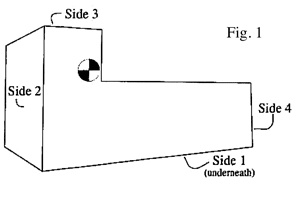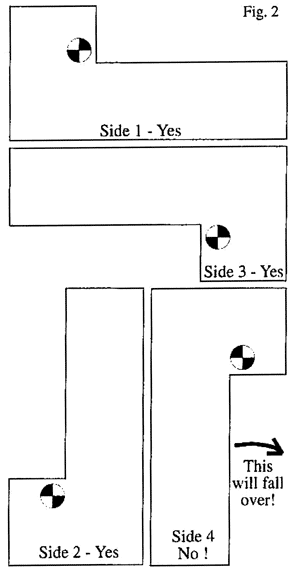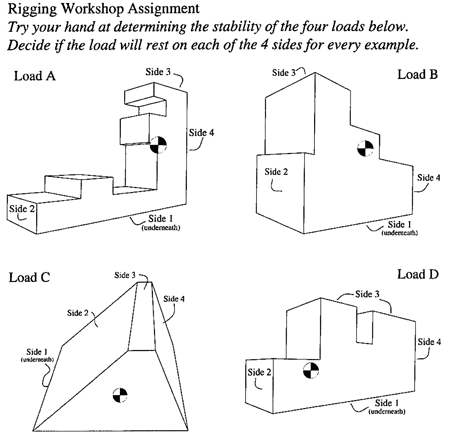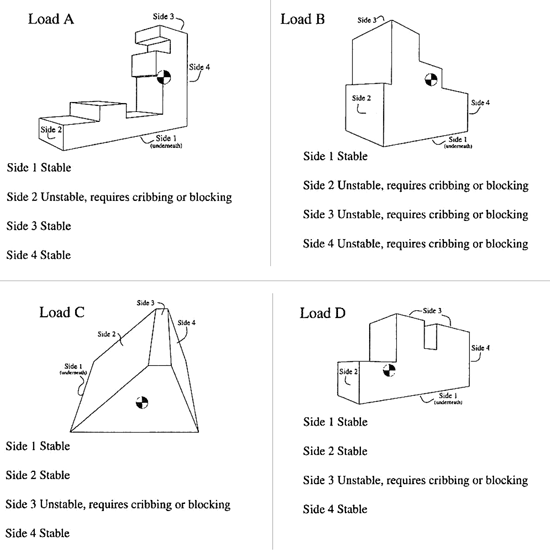We can enhance our understanding of how a load maintains its stability by looking at the location of its center-of-gravity (CG). With that in mind, we would like to present a short workshop in determining basic stability.
A rigger is often challenged with the task of turning a load. If we must turn the load onto its side, we must decide whether the new landing surface is appropriate for placement. If the CG is not over the footprint created by the new landing surface, then the load will not stay upright. It will fall over.
Let’s consider the load below (Fig. 1) and the four sides as shown. [For these workshops we are not seeking information about the front or back of the load.] If we were assigned the task of placing this load on any of its four sides, which side(s) would provide a suitable base for the load?

Given the four sides, we envision the load rotating to see if the CG is over or supported by the base foot. This foot can be one, two or more supports. Also, we should be aware that the load’s outside structure does not always represent the concentration of load. Sometimes a large piece of equipment’s CG is towards one end or sidewall because there is a greater volume of steel or other heavy component in that area.
In the solution below (Fig. 2) we can see that the load is stable as it rests on side 1, side 2 and side 3. We recognize that it wouldn’t take much to get the side 3 scenario to tip over with a little help, however it will sit if undisturbed. The position with side 4 on the bottom is not acceptable. It will tip over.


[The answers to the workshop can be found below]
Happy trails to all my crane and rigging friends,
Mike Parnell
ITI-Field Services
P.S. This article was originally published in The Professional Rigger Newsletter.
Workshop Answers:





COMMENTS